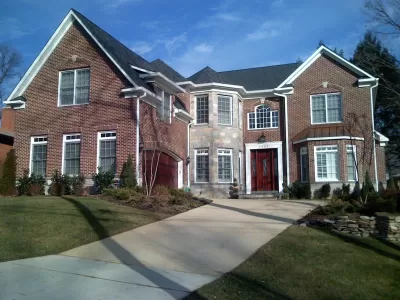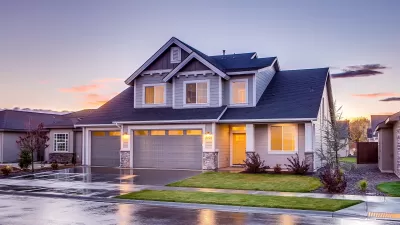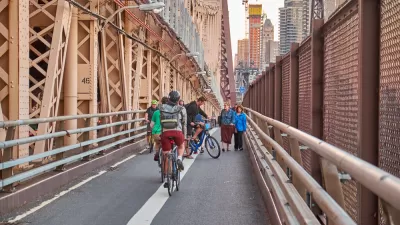Just when boomers are ready to return to the city to enjoy all its cultural offerings, they find themselves priced out. Many do downsize, however, from large single family homes to more urban areas close to home.

The problem for these well-off, comfortable folks in New York and New Jersey suburbs is that desirable Manhattan and Brooklyn dwellings have increased far more rapidly than their suburban homes, even those in desirable communities.
Joseph Berger, who writes on the neighborhoods and people of New York City, describes the housing goals and current living situations of many singles and couples living in suburban Westchester County and New Jersey. It makes for compelling reading, particularly if you are of a certain age.
Every one of his subjects had lived in New York City earlier and then left to "reap the benefits of the suburbs: They sent their children to excellent public schools and raised them in safety and comfort, in backyards, playrooms and cul-de-sacs."
And their houses have increased nicely in value. Now they would like to find apartments with doormen and elevators so they don’t have to climb stairs, shovel snow and schlep packages. They want a place where they can “age in place,” as the phrase goes. But they are finding that in the past 15 years, prices for such apartments in Manhattan and Brooklyn have risen far more than the values of their suburban homes....
According to a Queens College study of data from the United States Census Bureau’s American Community Survey of 2009-2013, the median price of an owner-occupied house or apartment was $518,400 in Westchester; $454,500 in Nassau County; and $451,400 in Bergen County, N.J. In Brooklyn it was $557,100, and in Manhattan it was $828,100.
While prices in the three suburban counties rose 34 percent, 40 percent and 39 percent since 2000, they rose 80 percent in Brooklyn and 70 percent in Manhattan.
Take the Nellissens of Ramsey, N.J., 26 miles northwest of midtown, Manhattan (per Wikipedia) for example. After "learning that modest Manhattan two-bedrooms were going for $1.5 million, they sold their house in November for $690,000 (their taxes had been almost $19,000 a year) and settled on a two-bedroom, $2,600-a-month rental in Fort Lee, N.J., with panoramic Hudson River views," writes Berger. High property taxes are also a factor in encouraging suburbanites to give up their large homes.
“I would have loved to move back to the city — to be able to walk every place, not need a car, see lots of friends in the city,” said Ms. Nellissen, 55. “But at this point in my life I’d rather live economically and spend my money on entertainment. To pay a Manhattan rent, I would not be able to afford all the things I moved to the city for.”
The Nellissen's situation is typical of the many other singles and couples, boomers and seniors, Berger writes about. The all wish to move back to the City, but find that a home of adequate size is not affordable for them to maintain their lifestyle.
Berger wrote about the movement of younger generations away from suburbia and to the city two years earlier, posted here, with a focus on Long Island, but with a twist.
A recent report on the suburb-dotted New York counties of Westchester, Nassau and Suffolk, based on United States census data, found that those young people seem to be lingering longer in New York City, sometimes forsaking suburban life entirely.
One can't help but wonder how these suburbs will fare with both younger and older generations leaving, notwithstanding the return of urban millennials to raise families.
More of Berger's writings about New York City and suburban neighborhoods can be found here on Planetizen.
FULL STORY: Eager to Move to the City, but Stranded in the Suburbs

Alabama: Trump Terminates Settlements for Black Communities Harmed By Raw Sewage
Trump deemed the landmark civil rights agreement “illegal DEI and environmental justice policy.”

Study: Maui’s Plan to Convert Vacation Rentals to Long-Term Housing Could Cause Nearly $1 Billion Economic Loss
The plan would reduce visitor accommodation by 25% resulting in 1,900 jobs lost.

Planetizen Federal Action Tracker
A weekly monitor of how Trump’s orders and actions are impacting planners and planning in America.

Wind Energy on the Rise Despite Federal Policy Reversal
The Trump administration is revoking federal support for renewable energy, but demand for new projects continues unabated.

Passengers Flock to Caltrain After Electrification
The new electric trains are running faster and more reliably, leading to strong ridership growth on the Bay Area rail system.

Texas Churches Rally Behind ‘Yes in God’s Back Yard’ Legislation
Religious leaders want the state to reduce zoning regulations to streamline leasing church-owned land to housing developers.
Urban Design for Planners 1: Software Tools
This six-course series explores essential urban design concepts using open source software and equips planners with the tools they need to participate fully in the urban design process.
Planning for Universal Design
Learn the tools for implementing Universal Design in planning regulations.
Caltrans
Smith Gee Studio
Institute for Housing and Urban Development Studies (IHS)
City of Grandview
Harvard GSD Executive Education
Toledo-Lucas County Plan Commissions
Salt Lake City
NYU Wagner Graduate School of Public Service





























